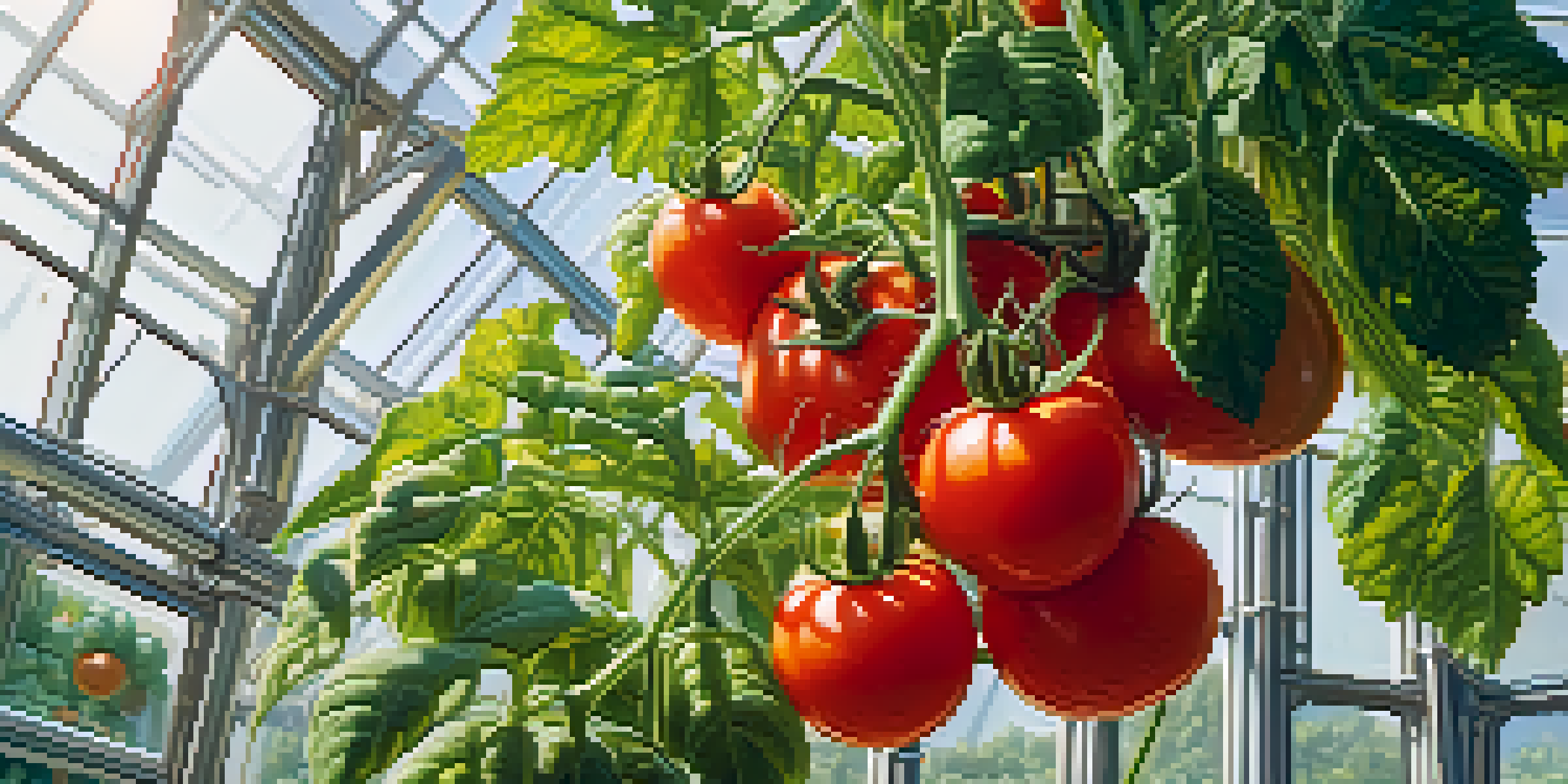Genetic Engineering: A Controversial Tool in Plant Conservation

Understanding Genetic Engineering in Plants
Genetic engineering is a scientific technique that allows us to modify the DNA of organisms, including plants. This process can enhance desirable traits like disease resistance, drought tolerance, and nutritional value. Imagine a tomato that can withstand extreme weather while remaining juicy and flavorful—this is the potential of genetic engineering. By selectively altering genes, scientists can create plants that thrive in challenging environments, helping us address food security issues.
Genetic engineering is not a bad thing. It’s a tool, and like any tool, it can be used for good or ill. The key is to ensure it is used wisely.
However, the concept of modifying plant genes raises a lot of questions. People often wonder about the safety of these modified plants for human consumption and their impact on the environment. Concerns about unintended consequences, such as crossbreeding with wild species, can create a significant debate. Understanding both the scientific principles and the ethical considerations is crucial in this conversation.
As we delve deeper into the world of plant conservation, it's essential to recognize that genetic engineering is just one tool among many. While it offers innovative solutions, it also requires careful management and oversight. Balancing the benefits of technology with environmental preservation is key to a sustainable future for our planet.
The Role of Genetic Engineering in Plant Conservation
Genetic engineering can play a vital role in conserving endangered plant species. By enhancing traits that allow plants to adapt to changing climates or resist diseases, we can help preserve their populations. For instance, researchers have successfully engineered certain crops to fend off pests without the need for harmful pesticides, thus protecting both the plants and their ecosystems.

Moreover, genetic engineering can facilitate the restoration of habitats that have been damaged by human activity. Imagine reintroducing a plant species that has been wiped out in a particular area, but now it has been genetically enhanced to flourish despite the altered conditions. This can breathe new life into ecosystems, helping to restore balance and biodiversity.
Genetic Engineering Enhances Plants
This technology can improve traits like disease resistance and drought tolerance, helping to address food security.
However, it’s important to approach this tool with caution. The long-term effects of introducing genetically engineered plants into the wild are still being studied. Conservationists must weigh the urgency of saving a species against the potential risks of altering its genetic makeup.
Ethical Considerations in Genetic Engineering
The use of genetic engineering in plant conservation is not without its ethical dilemmas. Questions arise about the extent to which humans should interfere with nature. Are we playing God by altering the genetic structure of living organisms? These concerns can lead to heated debates among scientists, ethicists, and the public alike.
The greatest danger in times of turbulence is not the turbulence; it is to act with yesterday's logic.
It's crucial to engage in open discussions about these ethical considerations. By doing so, we can foster a better understanding of the potential benefits and risks associated with genetic engineering. Transparency in research and its applications can help build trust among communities and stakeholders who are affected by these technologies.
Ultimately, navigating the ethics of genetic engineering requires a balanced approach. We must respect the natural world while also exploring innovative solutions that can aid in conservation efforts. Finding common ground among different perspectives can lead to more informed decision-making.
Success Stories: Genetic Engineering in Action
There are several success stories where genetic engineering has made a positive impact on plant conservation. For example, scientists have developed a strain of rice called 'Golden Rice' that is enriched with Vitamin A. This genetically modified rice has the potential to combat malnutrition in regions where rice is a staple food, demonstrating how genetic engineering can address both food security and health issues.
Another inspiring example is the work done on the American chestnut tree, which was nearly wiped out due to a blight. Researchers have engineered a version of this tree that can resist the disease, allowing it to thrive once again in its natural habitat. This project not only helps restore a beloved species but also contributes to the overall health of forest ecosystems.
Ethics in Genetic Engineering
The debate around altering plant genes raises ethical questions about human intervention in nature.
These stories highlight the promise of genetic engineering as a tool for enhancing plant resilience and aiding conservation. They serve as reminders that with thoughtful application, science can lead to significant advancements in our efforts to protect the planet's biodiversity.
Public Perception and Acceptance of Genetic Engineering
Public perception of genetic engineering varies widely, often influenced by cultural, social, and educational factors. While some people embrace the technology for its potential benefits, others express skepticism or outright opposition. This divide can be attributed to a lack of understanding about how genetic engineering works and its implications for health and the environment.
To bridge this gap, education plays a pivotal role. Informative campaigns that explain the science behind genetic engineering and showcase its positive applications in conservation can help demystify the process. When people understand the rigorous testing and regulations that govern genetically modified organisms (GMOs), they may feel more comfortable with the technology.
Engaging the public in discussions about genetic engineering can also foster a sense of ownership and involvement in conservation efforts. By actively participating in the conversation, individuals can voice their concerns and contribute to shaping the future of this technology in a way that aligns with societal values.
Regulatory Frameworks Surrounding Genetic Engineering
The use of genetic engineering in plant conservation is governed by various regulatory frameworks, which aim to ensure safety and efficacy. In many countries, genetically modified plants undergo rigorous testing before they can be released into the environment or the market. This process is designed to assess potential risks to human health and biodiversity, making it an essential step in responsible innovation.
However, regulatory frameworks can vary significantly from one country to another. Some nations have stringent regulations, while others may have more lenient approaches. This inconsistency can lead to challenges in international trade and collaboration, as different countries may have differing levels of acceptance regarding genetically engineered plants.
Public Education is Essential
Informative campaigns can bridge the gap in understanding and acceptance of genetic engineering technologies.
Navigating these regulations requires collaboration among scientists, policymakers, and conservationists. Establishing standardized guidelines can help harmonize practices across borders, ensuring that genetic engineering is used safely and ethically in plant conservation efforts worldwide.
Future Directions in Genetic Engineering and Conservation
The future of genetic engineering in plant conservation holds exciting possibilities. Advances in technology, such as CRISPR gene editing, may enable even more precise modifications to plant genomes. This could lead to the development of crops that not only resist diseases but also adapt to changing climates, ensuring food security for future generations.
Additionally, as our understanding of plant genetics deepens, we may find new ways to harness the natural processes of evolution. By combining traditional conservation methods with genetic engineering, we can create a holistic approach to preserving plant species. This synergy could enhance the resilience of ecosystems in the face of environmental challenges.

Ultimately, the future of genetic engineering in conservation will depend on collaboration among scientists, policymakers, and communities. By working together, we can ensure that this powerful tool is used responsibly and effectively to protect our planet's precious plant diversity.